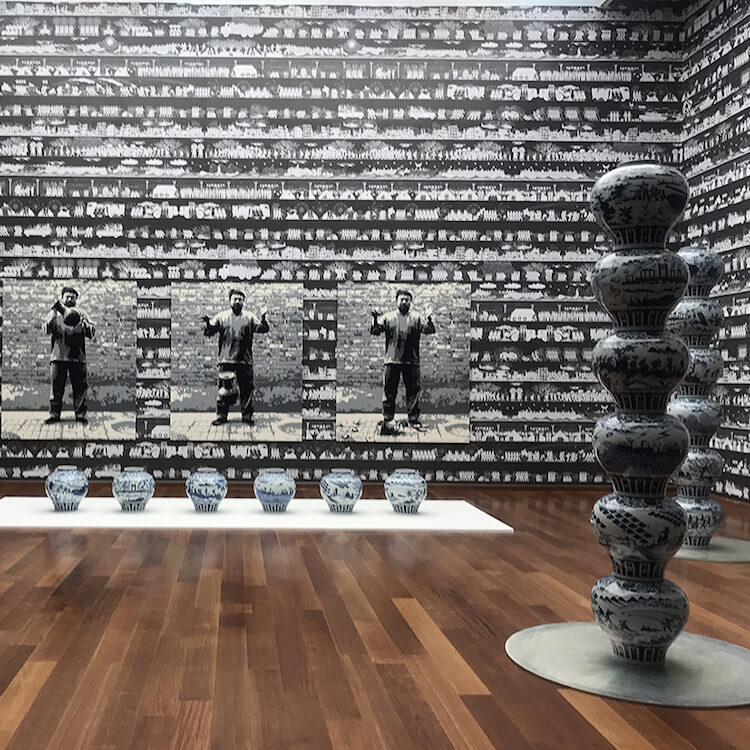ISTANBUL—After that lengthy journey, the roads join and take us back to Ai Weiwei on Porcelain with a better sense of what his Odyssey installation represents. The wallpapered room tower over its viewers. The blue and white porcelain pots would be lost in this vastness if they were not present in such quantity, lined on the floor and erected in high columns, one of which is pure white, a statement perhaps of innocence.
The shift from epic Chinese themes from the Ming period, of war and courage makes a seamless transition into the present.
Warring tigers (Ai has a huge personal collection of antique Chinese ceramic shards containing tiger images is part of the exhibition) neatly fit the battle over Syria by Russia and the USA, arguably the beasts. In another gallery two rows of plates are shown. One reprises the Alan Kurdi photograph but here comes across poignantly and intimate on a domestic object than as a meme in print and online media. It is more harrowing because its form, a plate, evokes home and family. Refuges at trying find the former while seeking to protect the latter.
Wallpaper is used elsewhere, a group of painted pots (Colored Vases, 2015) is backgrounded with images of the i-o-u’s that Weiwei issued when support poured into Beijing when he was incarcerated and later charged with tax evasion. And flowers give context to a seemingly pointless array of trompe l’oeil ceramic vegetables.
Most of the exhibition is installed in elegant but conventional museum manner and so does not offer the kind of contextual transformation of the ceramic works that say Ai’s Blenheim Castle intervention did.
We will cover the exhibition again and more fully. But for the moment it remains the most significant exhibition of ceramics of the last five years; bridging art, craft and time, displaying the authentic with the and inauthentic. Ai tends to present both history and the present with full literacy of a ceramics scholar (which he is).
It is a tribute Ai’s assimilation of ceramics, long rejected, into a fine arts career. Employing ceramics was somewhat unique when his career began. And the medium’s role in ceramics has grown exponentially over time. More than any other single contemporary artists he has erased the wall that has separated ceramics for fine art since modernism’s arrival. Tearing down this material apartheid was probably not his intent, I doubt he gave it moment’s though one way or another, except for his concern about this craft slowly disappearing in China. But he achieved it anyway, bringing democracy to clay and kiln and unleashing its conceptual power in continuing acts of unintended activism, not a minor achievement for man who once claimed to hate ceramics.
This is the second part of a two-part series on Ai Weiwei’s first exhibition in Istanbul. You can read Part 1 below.
http://cfileonline.wpengine.com/exhibition-ai-weiweis-first-exhibition-istanbul/
Do you love or loathe this exhibition from the world of contemporary ceramic art and contemporary ceramics? Let us know what you think in the comments below.

























Add your valued opinion to this post.